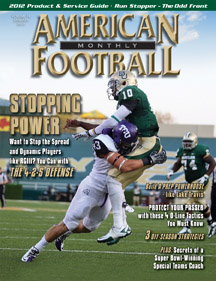Article CategoriesAFM Magazine
|
Texas Titans – Lake Travis High School has built a winning tradition from the ground up.by: David Purdum© More from this issue The Lake Travis (TX) High School athletic program is blessed with a huge enrollment, college-caliber facilities and an abundance of next-level talent, especially at the quarterback position. With those types of advantages, the Cavaliers are expected to have success. But, with four straight 4A state titles and a shot at an unprecedented fifth, Lake Travis football has exceeded even the highest expectations and stands out as a prime example of an administration and coaching staff that has maximized the program’s potential. That wasn’t always the case, though. The Cavaliers went 50-110-2 from 1988 to 2003, including a 1-19 two-year stretch in 2001-2002. Things were so tough that it took the current prolific run, which features a 48-game win streak, just to get the program’s overall record back to .500. ....The full article can only be seen by subscribers.
|
|
|||||||
| HOME |
MAGAZINE |
SUBSCRIBE | ONLINE COLUMNISTS | COACHING VIDEOS |
Copyright 2026, AmericanFootballMonthly.com
All Rights Reserved





